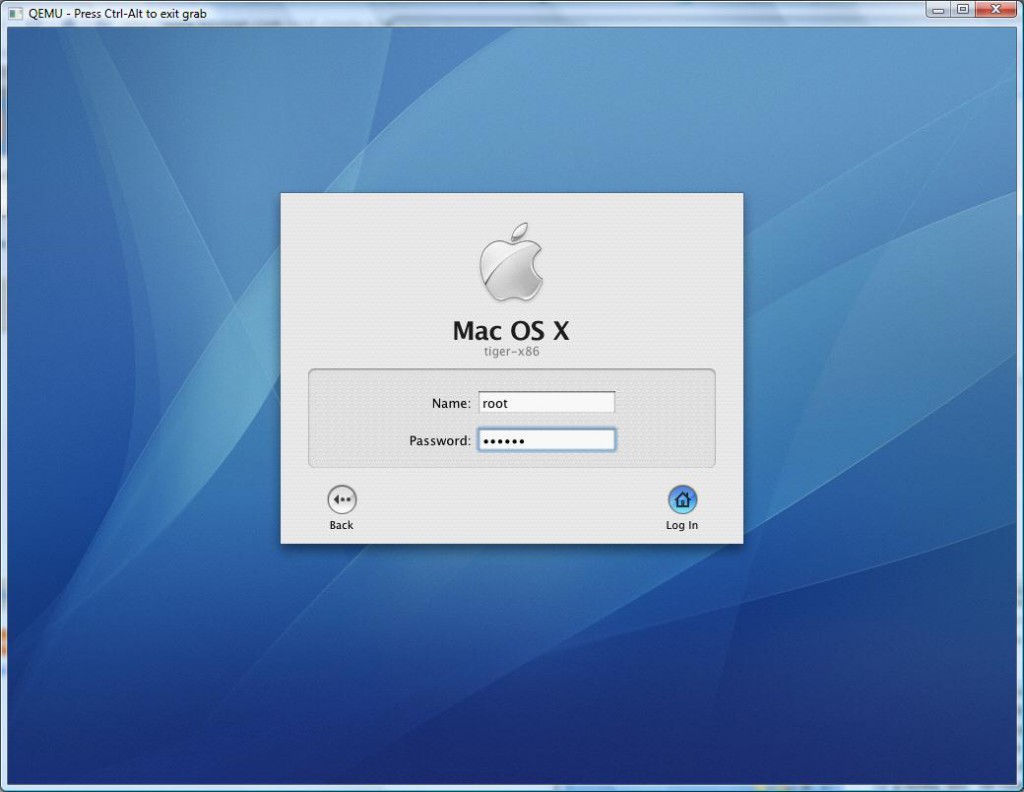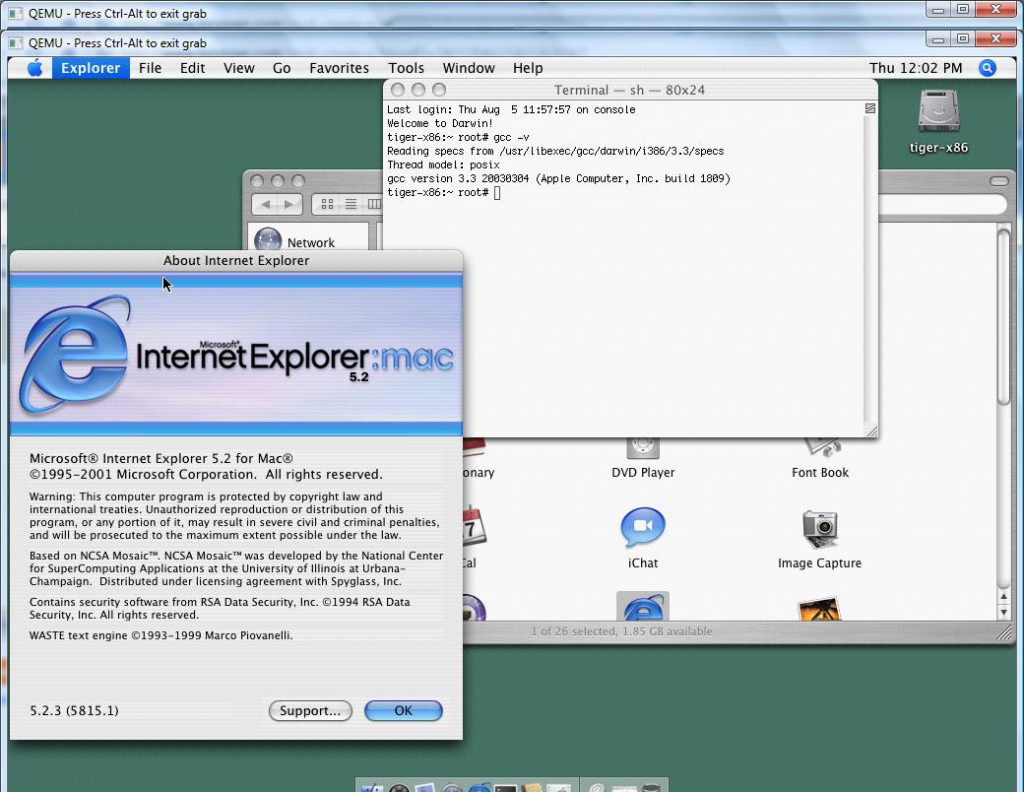Well as the maintainer of the SIMH binaries on sourceforge, I end up needing access to a bunch of different platforms to build some prebuilt binaries for non win32 people out there.
As a direct result, I end up emulating many of the platforms, but for OS X, I have an old PowerPC mac mini that I used to build stuff, but I gave it away last year. Anyways after digging around on various networks, I came across this file, “tiger-x86.tar.bz2” So after copying it to my pc, and doing the bzip2/tar decompress shuffle, I had what looked like a VMWare config for OSX on intel.
So I figured this was as good as any test for the latest build of Qemu. After a bunch of experimenting I worked out this was the best way to start it:
qemu.exe -L pc-bios -m 512 -hda tiger-x86-flat.img -net nic,mdel=rtl8139 -net user -no-acpi -no-reboot -k en-us
Then when the bootloader comes up, I just typed in:
platform=x86pc
And away it went!
Now sure it works, but it’s SLOW. VERY Slow. You can remove some TPM extension, and it’ll speed up somewhat, and at least idle like a normal process. After all, I only wanted this setup to build some binaries, not run this like a desktop OS.
To make the bootstring permanent, you just have to open up a termianal window, and edit the file:
/Library/Preferences/SystemConfiguration/com.apple.Boot.plist
<?xml version="1.0" encoding="UTF-8"?>
<!DOCTYPE plist PUBLIC “-//Apple Computer//DTD PLIST 1.0//EN” “http://www.apple.com/DTDs/PropertyList-1.0.dtd”>
<plist version=”1.0″>
<dict>
<key>Kernel</key>
<string>mach_kernel</string>
<key>Kernel Flags</key>
<string>platform=x86pc</string>
<key>Boot Graphics</key>
<string>Yes</string>
</dict>
</plist>
Save it, and you’ll be good to go!
For me it was nice that the networking works, so I had an easy way to get source code into the VM, and executables out of the VM. One cool thing about this VM image is that it contains the compiler! I just wonder since it’s super old will it’s exe’s I make run on modern machines…? I don’t have any way to tell, so it may all be in vain.
As a test for the heck of it, I downloaded Internet Explorer 5.2 for the PPC version of OSX, and it runs.. It’s too slow to actually use it, although I’ve run it on real intel macs at the apple store, and it FLIES… It’s too bad they killed it IMHO I kind of liked it.
I’m not trying to advocate piracy and all that, but rather show how Qemu can help you run some VMWare disk images, and just how flexible it is.


